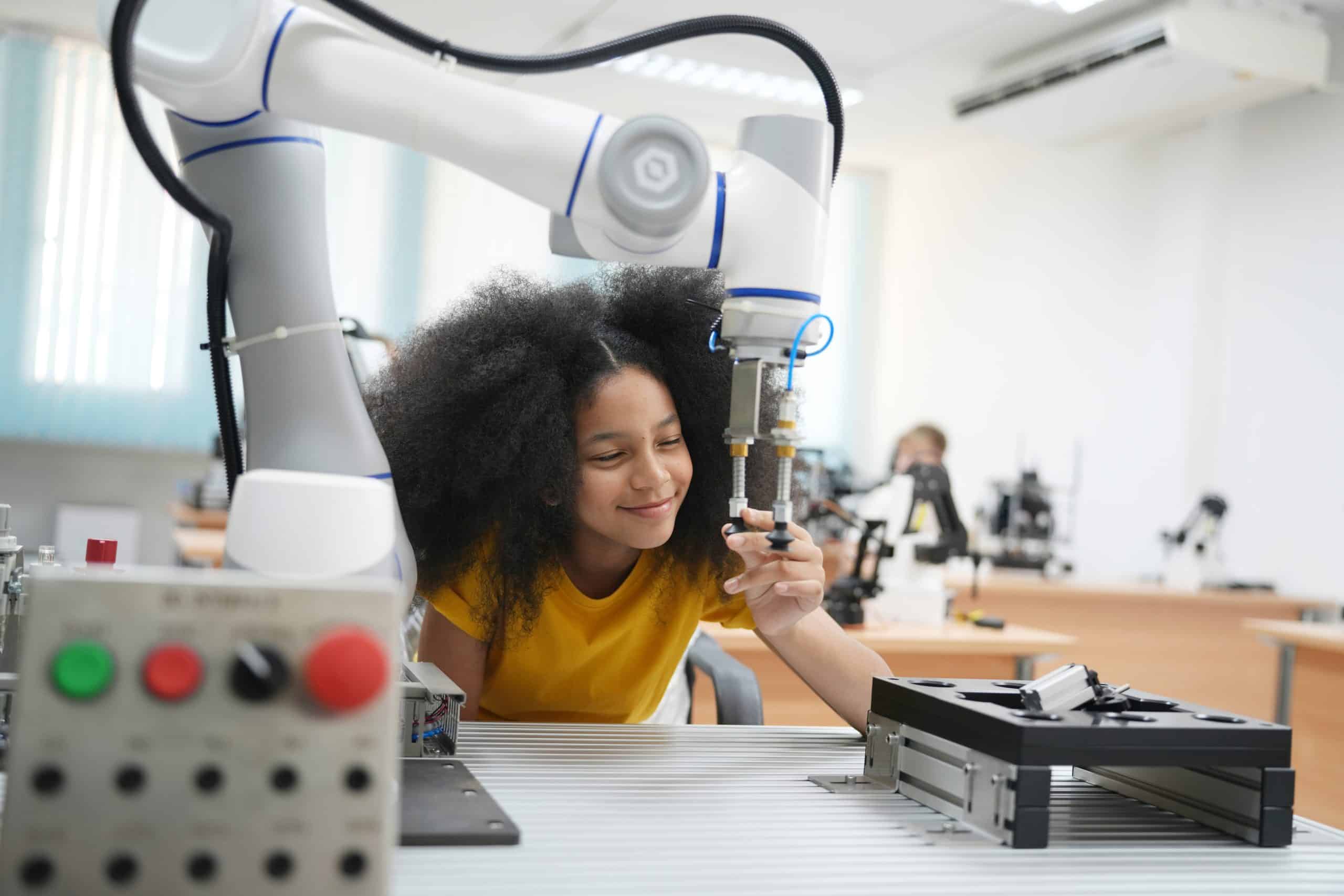How Can UK Businesses Use Augmented Reality for Product Prototyping?

As the world of technology continues to evolve, UK businesses are continually seeking innovative ways to improve their processes and offer immersive experiences to their customers. One area of technology that has gained significant attention in recent times is augmented reality. This digital tool, often referred to as AR, presents a plethora of possibilities in terms of product design and prototyping. Whether it’s offering customers a virtual view or designing prototypes in real-time, augmented reality will change the way businesses operate.
Understanding the Reality of Augmented Reality
Augmented reality is a technology that overlays digital information – such as images, sounds, and text – onto the real world. This can be achieved through smart devices, including smartphones, tablets, and AR glasses. More than just a gaming tool, it has the potential to transform the way businesses operate.
Topic to read : Skyrocket your success with a premier seo agency in new york
An important aspect of AR in businesses is in the area of product prototyping. In the past, businesses had to create physical prototypes to test product designs. This process was time-consuming, costly, and prone to errors. With the advent of augmented reality, however, businesses can now create and test virtual prototypes swiftly and efficiently.
Augmented Reality in Product Design and Prototyping
In the realm of product design and prototyping, AR can be a game-changer. It allows designers to create, modify, and test their designs in a virtual environment. This saves not only time but also resources that would have been spent on creating physical prototypes.
In parallel : Resources and advice for success in a career in consultancy
For instance, automotive businesses can use AR technology to design a new car model. Instead of creating a physical model, the design team can generate a 3D virtual model that can be viewed and modified in real-time. This interactive approach provides designers with a clear view of the product from all angles, aiding in the identification and correction of design flaws before the actual production process begins.
Moreover, augmented reality also enhances the product design process by enabling user testing. Potential customers can interact with the product in a virtual environment, providing feedback on their experience. This user-centric design process not only enhances the quality of the product but also ensures that it meets the needs of the target audience.
The Business Impact of Augmented Reality
The impact of augmented reality on businesses extends beyond product design and prototyping. It also offers significant benefits in terms of customer engagement and experiences.
Businesses can use AR apps to provide customers with a virtual view of their products. For example, a furniture business can create an AR app that allows customers to visualize how a piece of furniture would look in their home. Such interactive experiences not only engage customers but also enhance their buying decision process.
Beyond product visualization, businesses can use AR for personalized marketing. By leveraging AR technology, businesses can create personalized promotions that resonate with their customers. This can lead to increased customer loyalty and higher conversion rates.
Augmented Reality for Employee Training and Education
AR can also be a potent tool for employee training and education. Traditionally, businesses have relied on manuals and instructional videos for training. However, these methods can be time-consuming and may not always be effective.
With augmented reality, businesses can create interactive training experiences that are both engaging and informative. For instance, a manufacturing company can use AR to train employees on the assembly process. Through AR glasses, employees can view digital instructions overlaid on the actual assembly line, providing a hands-on learning experience.
Such immersive training experiences not only improve the learning process but also reduce the risk of errors. Furthermore, AR can provide real-time feedback, allowing employees to correct their mistakes on the spot.
The Future of Augmented Reality in UK Businesses
The potential applications of augmented reality in UK businesses are vast and varied. As the technology continues to evolve, it will undoubtedly become an integral part of product design, customer engagement, and employee training processes.
Looking ahead, businesses will need to stay abreast of advancements in AR technology to leverage its potential fully. By doing so, they can enhance their processes, create immersive customer experiences, and stay ahead in today’s rapidly evolving digital landscape.
While embracing AR technology may seem daunting, the potential benefits it offers make it a worthwhile investment. Augmented reality is not just a futuristic concept; it is a reality that UK businesses can utilize today to revolutionize their operations and create a competitive edge.
Remember, the future is not waiting. The time to embrace augmented reality is now. Be open to the possibilities that this immersive technology offers and watch as it transforms your business in ways you never thought possible.
Leveraging Augmented Reality in Product Development and Decision Making
Augmented reality is not just a technology trend, it’s becoming a crucial tool in product development and decision making for UK businesses. By understanding and incorporating this technology, businesses can enhance their product development process, and provide substantial leverage in the decision-making process.
In product development, AR can provide a virtual reality environment where designers can test variations of a product design in real-time without the need for costly physical prototypes. This capability can significantly accelerate the design process, allowing for quicker adjustments and improvements.
For example, imagine a clothing retailer utilising a magic mirror concept. This augmented reality feature allows customers to virtually try on different outfits without physically changing clothes. Designers can then use the feedback and data collected to adjust and perfect the design before it even goes into production.
In terms of decision making, AR can provide a vivid and interactive representation of data. Complex data sets can be visualised in a 3D format, making them more understandable and useful in the decision-making process. This mixed reality approach provides a deeper connection to the information, leading to more informed business decisions.
Moreover, AR can also be used in video prototyping. By using software like the Unreal Engine, businesses can create realistic and interactive video prototypes. These tools can help identify potential issues or improvements, enabling better product design and development.
Augmented reality is an immersive technology that is transforming the way UK businesses approach product development and decision making. By embracing this technology, businesses can create more effective and efficient processes, resulting in improved products and more informed decision making.
Enhancing Customer Experiences through Augmented Reality
One of the most promising applications of augmented reality in UK businesses is in enhancing customer experiences. The use of AR can provide a more interactive and engaging experience for customers, resulting in improved customer satisfaction and loyalty.
For instance, businesses can use AR to create reality virtual tours of a property or facility. This allows customers to explore the space from the comfort of their own home, providing a unique and engaging experience.
Similarly, businesses can leverage AR to provide customers with detailed product information in a more interactive format. They can use AR to overlay information onto the reality augmented view of a product, providing customers with a deeper understanding of the product.
Another notable application of AR in enhancing customer experiences is in the retail sector. For instance, businesses can use AR to create virtual fitting rooms, allowing customers to try on clothes virtually before making a purchase. This not only enhances the shopping experience but also reduces the likelihood of product returns.
Moreover, AR can also be used to provide a personalized shopping experience. By leveraging AR technology, businesses can provide personalized product recommendations based on the customer’s past purchases or browsing history.
The use of augmented reality in enhancing customer experiences is a clear demonstration of how immersive technologies can be used to create a more engaging and personalized experience for customers. As this technology continues to evolve, it will undoubtedly continue to play a crucial role in shaping the future of customer experiences in UK businesses.
Conclusion
Augmented reality is revolutionizing the way UK businesses operate. From streamlining product design and decision-making processes to creating immersive customer experiences and interactive training sessions, AR is a game-changer. As businesses continue to navigate the digital landscape, embracing AR technology is no longer an option—it’s a necessity.
However, to fully reap the benefits of this technology, it’s crucial for businesses to stay abreast of the latest trends and advancements in AR. This includes understanding how to effectively use tools like the Unreal Engine and knowing how to apply AR in various business scenarios.
In the end, the key to successfully integrating AR into business operations lies in a willingness to experiment and adapt. By being open to change, businesses can leverage the power of AR to gain a competitive edge and drive success in the future.
It’s clear that augmented reality is no longer a futuristic concept—it’s a reality. And it’s one that UK businesses need to embrace to ensure they stay ahead of the curve. As we move forward, businesses that effectively leverage augmented reality will be the ones that thrive in this digital age. After all, the future is not waiting. The time to embrace augmented reality is now. Be open to this immersive technology and watch your business transform in ways you never thought possible.
